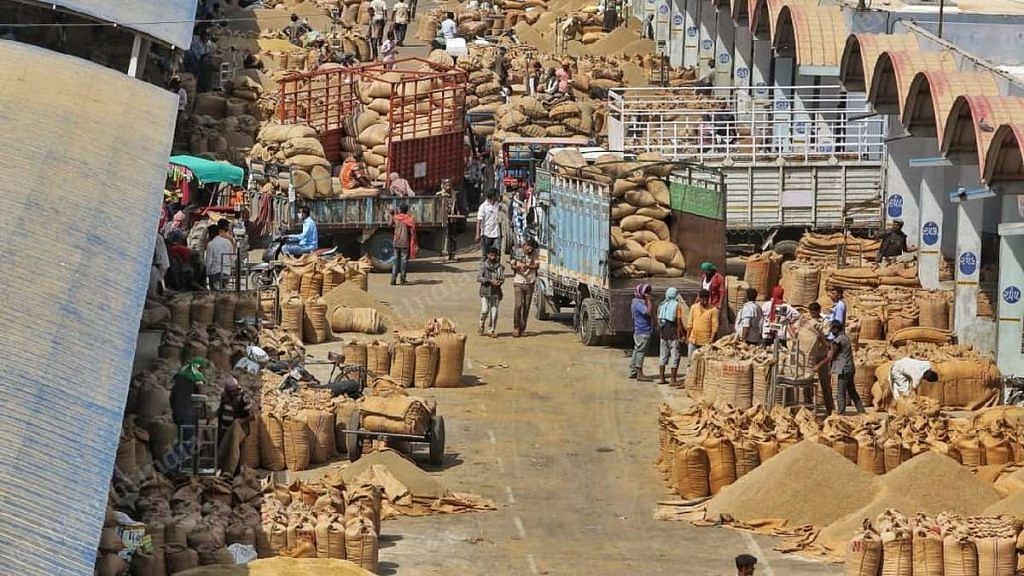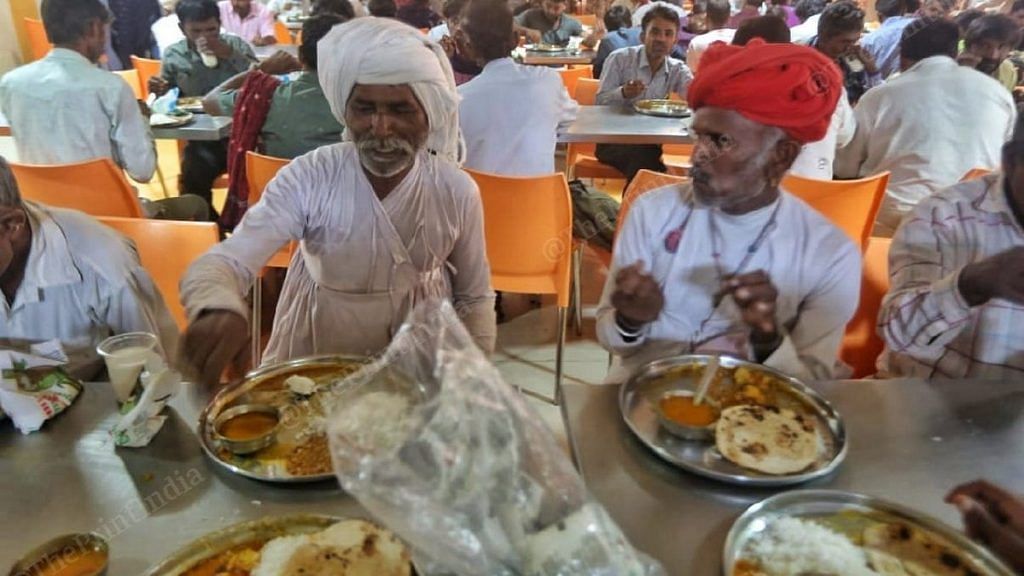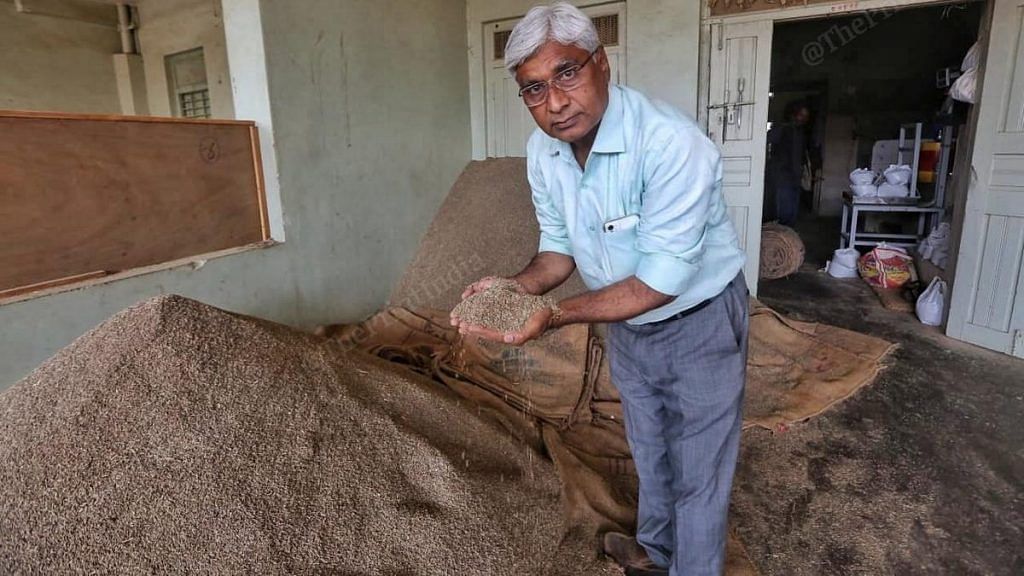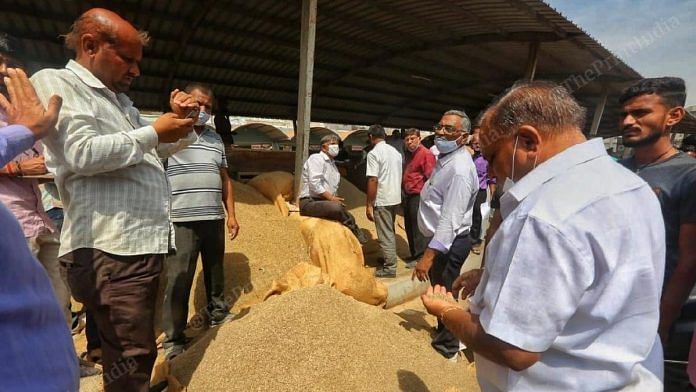Unjha, Gujarat: If you’re travelling through Gujarat’s Mehsana district and can smell fresh jeera (cumin) in the air, you’re probably in Unjha, the town that hosts Asia’s largest market of the spice.
Located about 80 kilometres north of state capital Gandhinagar, Unjha, a town of a little over 57,000 people according to the 2011 Census, has, for generations, been the spot where farmers from across the country sell the commodity to domestic and international traders. But one community dominates the business in jeera and other spices — the Patels. In fact, all 11 members of the Unjha Agricultural Produce Marketing Committee (APMC) mandi, are from the tight-knit Patel community.
The Patels are well-known for their dominance of the gems trade in Surat, especially diamonds, which has brought them enormous wealth and influence. But there are no Ferraris or Mercedes to be found among the jeera-trading Patels of Unjha, unlike their Surat counterparts. Although the jeera trade generates considerable wealth — around Rs 2,000 crore from exports annually — the traders don’t like to show off their wealth.

“We interact with farmers and traders every day. Even though we export, we have to keep one foot firmly on the ground over here. We can’t alienate the people we work with,” said Rakesh Patel, CEO of PJM Exports, an exporter of spices based in Unjha.
Devendra Patel, chairman of the Federation of Indian Spices Stakeholders, and a trader who owns a godown at the Unjha APMC, agreed, saying his community had no interest in leading a high-profile lifestyle.
“There’s no interest in leading a high-profile life. We live and work practically. Originally we were farmers, and that history is still very close to us,” Devendra said.
Also read: This Modi doppelgänger imitates the PM, attends BJP rallies, & even acted in a Gujarati movie
The business of jeera
Rajasthan and northern Gujarat, which are naturally dry and arid regions, offer the perfect climatic conditions for the growth of jeera, which is the second-most exported spice from India. Typically, it is sown from October to December, and harvested from February to April. India supplies approximately 70 per cent of the world’s jeera, 55 per cent of which is sown in Gujarat.
Unjha became a natural trading point for jeera and 27 other spices because they are cultivated within a 300-kilometre radius of the market. Farmers come here from the Sabarkantha, Banaskantha, Saurashtra and Kutch regions of Gujarat, and from Rajasthan.
But thanks to the spice trade, Unjha has become a well-developed town over the years. The APMC offers all 35 villages in the Unjha tehsil accident insurance, and has donated upward of Rs 100 lakh to hospitals, blood banks, and schools.
“It’s thanks to the spice trade that Unjha has developed so well. We are an entrepreneurial community, and people come from all over to observe how our market works,” said Dinesh Patel, chairman of the APMC.
Since 2016, Unjha has seen an increase in the production and trade of jeera — data from the APMC shows 21,66,532 quintals of the spice were traded in 2019-20, a massive jump over 11,34,808 quintals in 2016-17. The prices of these spices can vary considerably depending on the quality — from Rs 1,000 to Rs 3,000 per 20 kg.
The APMC itself was set up in 1954, and is preferred by farmers for selling their produce because they get cash immediately after a bid. Farmers also have at their disposal 52 godowns — constructed at the traders’ cost — to store their produce if they wish. The APMC has also set up permanent facilities for everyone who visits the market — a place to sleep, a canteen with mechanised roti-makers which feeds up to 3,000 people a day, and soil-testing facilities.

“The best thing about this market is that we get storage space, which doesn’t have to be paid for. And if we don’t get a good price, we can choose not to sell. We get cash the same day after a sale,” said Shravan Singh, a farmer who grows jeera and saunf (fennel) near Mount Abu in Rajasthan but sells at the Unjha APMC.
Farmers bring samples of their produce in heaps, which are shown to auctioneers who have paid a membership fee to the APMC. The process is mediated by a general commission agent and auction clerks to ensure fairness.
Anjibhai, who grows jeera in Kutch, says the auction process ensures fairness.
“The process is transparent and we have a say in whether we want to sell or not. We don’t always get a good price, but it’s better to have that choice,” he said.
How the business is evolving
According to data from the APMC, there are 800 firms in Unjha which are involved in the export of jeera and other spices. And Devendra Patel told ThePrint that his family, like most others, has been involved in this trade for generations.
“It’s a family business. I took over from my father,” said Devendra.

Praveenbhai Patel, who buys jeera in his native Unjha and sells it in Bengaluru, added: “My father started trading here, and my brother still lives here. I coordinate with my brother and buy my jeera from here, which I then sell in Bengaluru.”
However, this doesn’t mean that Unjha has not adapted with the time. Vishnu Patel, secretary of the APMC, said changes are slowly seeping in as a new generation takes over the business.
“Older businessmen stick to old methods of doing things. But with the newer generation, with new wealth, things are changing slowly. Technology has also improved. Change, in that sense, is inevitable,” he said.
(Edited by Shreyas Sharma)
Also read: Who’ll bring back lost years & honour, ask 127 Muslim men branded terrorists in Gujarat in 2001



